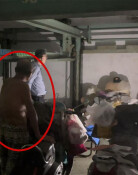Changing Trends in Koreas Aging Society
Changing Trends in Koreas Aging Society
Posted December. 11, 2007 03:09,
Parents and their children living separately do not contact each other very often, but that changes when parents income rises, according to a seminar held for two days starting November 30 by the Population Association of Korea.
Researchers at the seminar announced findings of some 20 dissertations. Researchers also predicted that ten years from now, 40% of the entire working population would consist of those aged 50 or over.
Jeong Jae-gi, a professor at Soongsil University, wrote in his thesis, Contact frequency of Korean families and social support trends, that Korea is the only OECD country where parents and their children meet more often when the income of parents goes up.
Based on results of the Korean General Social Survey (KGSS) in 2004 and the International Social Survey Program (ISSP) in 2001 of 33,000 people in some 20 countries, Jeong calculated the contact frequency between parents and their children according to parents income, education, age, gender and marital status.
He said, The results show that the contact frequency came out positive in Korea unlike other countries. This means family relationships in Korea are solidified more by material necessity than emotional needs.
The dissertation added that, among the 27 countries concerned, those who go see their un-cohabiting mother more than once a week numbered 27%, the lowest of all.
In a dissertation, The outlook of academic achievement and labor market participation of a future aged population, published by Kim Tae-heon, a professor at the Korea National University of Education, and two other researchers, with the rapid population aging trend, it will be more common to see workers aged 50 and older in the near future.
The paper said that in 2005, male workers aged between 20 and 39 accounted for 47%, but the numbers are expected to drop to 35% in 2020, while those aged 50 and older will increase dramatically from 25% in 2006 to 40% in 2020.
At the same time, it is estimated that the current figure of male college graduates between 50 and 64, which accounts for around 18% as of 2005, will also grow to 33% in 2020.
The authors of this paper think that employment policies of the government that have only focused on creating jobs for the aged with low educational achievements until now will be useless in the future.
Jang Se-hoon, a professor at Donga University, showed in his paper, Different approaches to supplying housing by looking at family formation and living trend, that the number of households composed of one person increased from 4.8% in 1980 to 20% in 2005 and those composed of two people grew from 10.5% to 22.2% during the same period, while those composed of more than six people dropped significantly from 29.9% to 3.3%.
Jang said, With the growing number of nuclear families and with the sizes of houses getting bigger, the trend of unsold apartments may be here to stay.
Choi Jin-ho, a professor at Ajou University, said in his paper, Characteristics and changes of Korean population movement in recent times, that since 2000, the concentration of population into metropolitan areas has been becoming more serious.
The paper found out that the net number of population inflow into the Seoul metropolitan area for the last three decades was 971,000 between 1975 and 1980, 925,000 between 1985 and 1990, and that the number decreased slightly to 249,000 between 1995 and 2000 before it jumped to 539,000 between 2000 and 2005.
jarrett@donga.com






![돈 뺏어간 96%가 자식·요양사·지인…‘양자’ 신고해 상속 노리기도[히어로콘텐츠/헌트②-下]](https://dimg.donga.com/c/138/175/90/1/wps/NEWS/IMAGE/2025/12/15/132967464.1.jpg)
